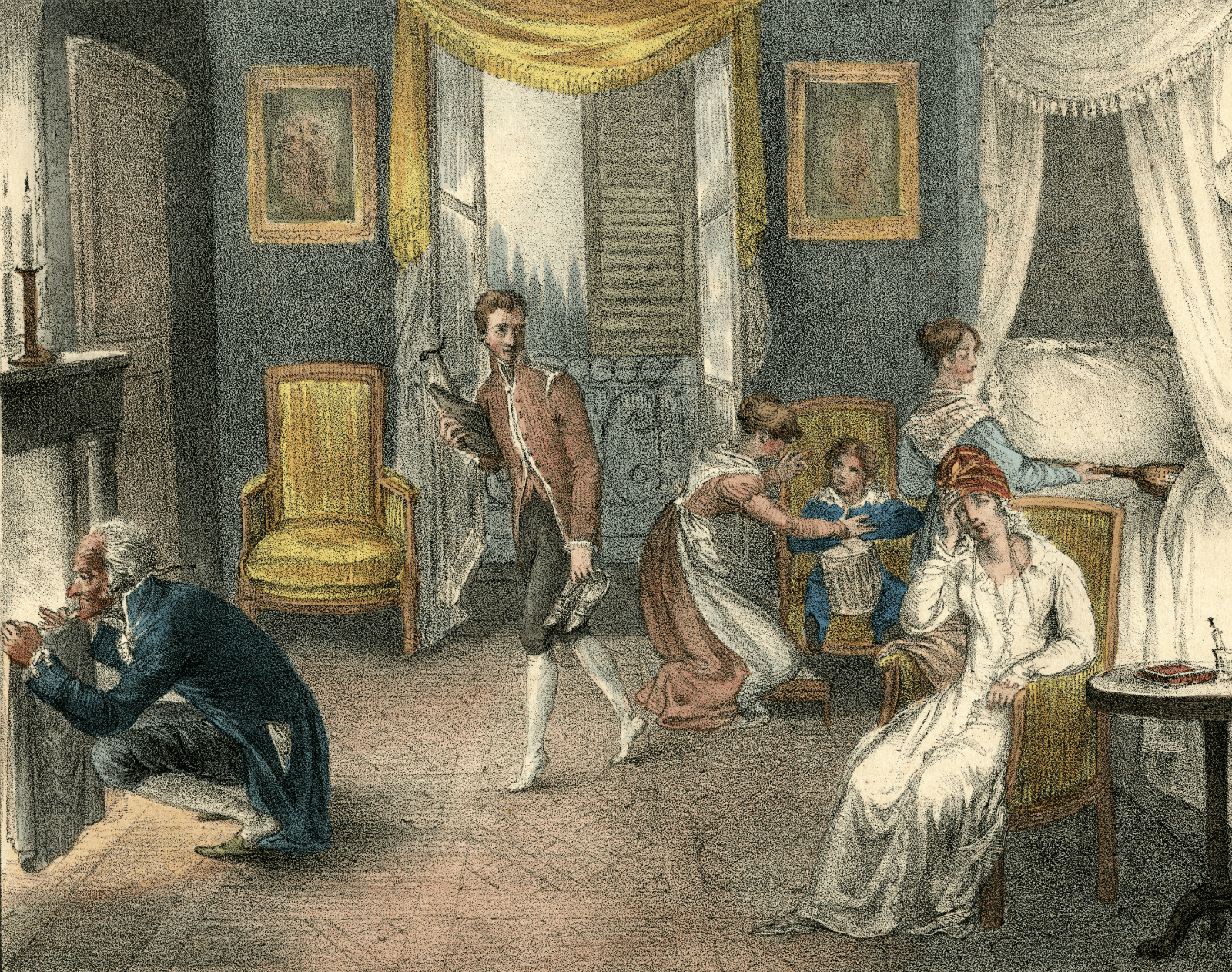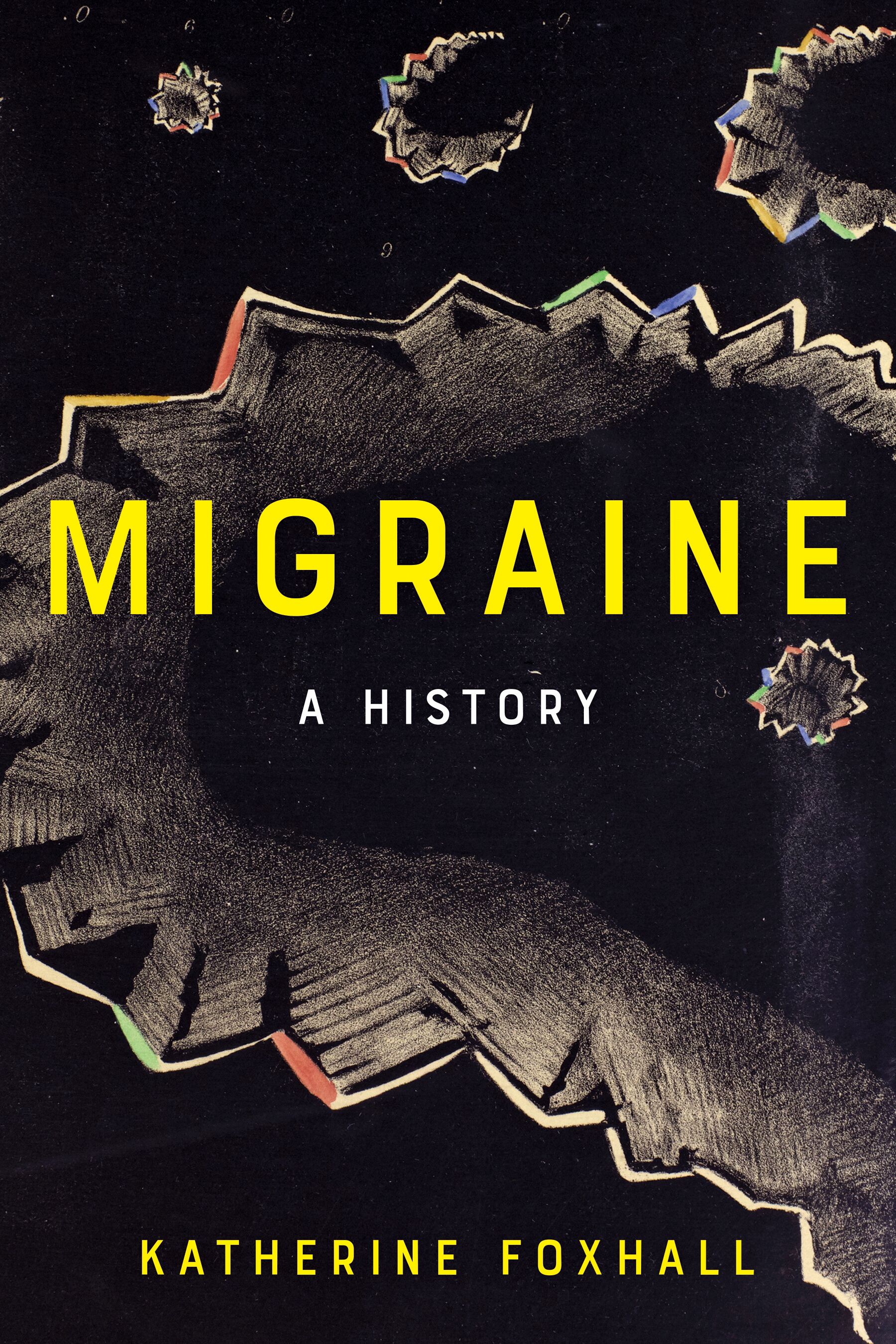
The following is adapted from an excerpt from social and medical historian Katherine Foxhall’s new book, Migraine: A History, published by Johns Hopkins University Press, and out June 18, 2019.
In 1936, Alfred Goltman, a physician from Tennessee, reported on one of his cases in the prominent medical journal Allergy. The patient was a 26-year-old woman with a history of headaches, nausea, and vomiting since childhood. Goltman believed the observations he had made on this patient helped reveal the pathological physiology of migraine.

He had first met the woman, a registered nurse, in 1931. He recorded that for as long as she could remember, she had experienced “typical migrainous attacks.” A languid feeling warned of the attack’s approach before pain, beginning over her right eye, gradually radiated backward until it covered her whole head. The headache would last between one and three days, and, as the pain reached its height, she would vomit. Goltman paid little attention to her family history, but he did note his patient’s observation that eating wheat consistently produced an attack. Although wheat had proven to be the principal offending allergen, Goltman’s tests also suggested she was sensitive to milk, cheese, seafood, some nuts, fruits and vegetables, feathers, and dust. Measuring her blood count, urine, nitrogen level, blood calcium, and spinal fluid, Goltman found them all to be normal.
Goltman did make one peculiar observation: the nurse had a depression in the left frontal region of her skull. The area, an inch in diameter, also contained a marked concentration of blood vessels. The woman’s history revealed that four years before meeting Goltman, she had been admitted to the Memphis Baptist Hospital’s neurosurgical service under the care of neurosurgeon Dr. Raphael Eustace Semmes. Semmes was the first neurosurgeon in that city, having been trained at Harvard University by Dr. Harvey Cushing, an American, often known as the father of modern neurosurgery. In Memphis, Semmes had performed a “craniocerebral exploration” through a burr hole, a small circular opening made in the woman’s skull, while she was experiencing a severe headache. As was his usual practice, he performed the operation under local anesthetic. He opened the dura—the thick membrane surrounding the brain and spinal cord—and “a quantity of fluid escaped under increased pressure.” Semmes found no evidence of a tumor.
Semmes’s procedure drew on decades of excitement about the possibilities of discovering the localization of cerebral function and, related to this, the development of neurological surgery. In the late 19th century, British, American, French, and German surgeons competed to open up skulls to treat cranial blood clots, abscesses, tumors, epilepsy, and mental illness, particularly when these had been caused by trauma. Their investigations were aided by technological developments, such as anatomical staining and electrical stimulation, and an enthusiasm for experimenting, using animal studies.
Between the 1890s and the 1920s, some surgeons believed brain surgery could cure inherited criminal tendencies and remake a person’s social identity by altering their character. Following this theory, some surgeons operated on children who were referred to them by juvenile courts, in an attempt to release pressure on the brain, a procedure with a mortality rate of 42%, according to one sample. By the 1930s, the trend of intervening surgically to alter human behavior headed toward its peak with the development of frontal lobotomy as a treatment for mental illness.
Semmes’s surgical procedure—drilling a hole in the skull of a nurse while she experienced a migraine—marks a moment between what now appear to be two very troubling eras in experimental neuro- and psychosurgery. It is easy to be horrified today by the apparent recklessness and cruelty of lobotomy and procedures related to it, but, at the time, the risks of such surgical interventions were not only accepted in the mainstream—by both patients and physicians—but they were also popular. There were few effective treatments for neurological and psychiatric disorders, and surgery often seemed to work, in a sense, by beneficially changing the patient’s personality and restoring their productivity.
Semmes’s patient survived the surgery, but her migraine headaches did not stop. When Goltman later observed her healed head, he noticed something interesting: during her headaches, the definite depression that had been left by the skin healing over the hole in her skull began to fill up, “gradually assuming the appearance of a tumor.” The bulge was not tender, nor did it appear as if brain tissue was “protruding through the skull opening.” As the migraine attack ended, the swelling would recede and return to a concavity. For Goltman, this added support to the theory, first proposed during the 19th century, that migraine headache must be vascular in origin and characterized by dilation of the blood vessels during the attack.
Goltman’s paper would prove to be influential in the emergence of vascular explanations for the mechanism of migraine from the late 1930s, but the combination of experimental surgery, allergic theories, and observations of the brain and vascular system featured in Goltman’s paper illustrates how vascular ideas jostled for position among other theories as the international field of migraine research fragmented in the early decades of the 20th century.
In particular, alongside allergic and hormonal theories, ideas about migraine and personality gained traction during the 1920s and 1930s, particularly in North America.
One of the most influential proponents of the concept of a migraine personality was American physician and popular health columnist Walter Alvarez. Much of the discussion about migraine personality took on a very negative tone, but in a self-help book published in 1952, Alvarez presented migraine as a confirmation of his readers’ intellectual superiority. Migraine was a plague, perhaps, but at least it was one of “wide-awake, attractive, and well-educated persons.” For Alvarez, the typical migraine patient was female, and her headache was only half of the problem. These women had a distinct personality and appearance, so much so that Alvarez claimed one of them only had to enter the room for him to suspect her trouble. His description was designed to flatter: “such a nice trim figure, such a bright, eager, and intelligent face.”
When writing for a professional audience, however, Alvarez was less complimentary, describing the women as tense, perfectionist, hypersensitive, easily fatigued, and often depressed or disconnected. Although, in most ways, she would be “decidedly feminine and sexually attractive,” there was a masculine element to her nature, “which causes her to act independently and to think dispassionately much as does an able businessman.”
Many migrainous persons were also allergic, which Alvarez posited as being part of their exaggerated sensitivity in all areas of their lives. In a section that could have been lifted straight out of the 19th century, Alvarez explained that many women with migraine had inherited not just a nervous predisposition, but a “frail and sickly body too weak to stand up to the strains of life.” While Alvarez did not suggest any outwardly visible physiological inferiority, he did note that these women often had “defective and poorly functioning pelvic organs,” dysmenorrhea, and “severe monthly storms.”
In 1948, neurologist Harold G. Wolff published Headache and Other Head Pain, which would become undoubtedly the most influential study of migraine in the 20th century. If the previous decades had been characterized by disagreement and fragmentation, Wolff’s vascular research galvanized the professional headache community, while his ideas about the “psychobiologic constellation” of migraine also played an important role in cementing assumptions about personality.
Wolff collated his observations from a study of 46 subjects with migraine and found that certain features occurred “with striking frequency.” As children, more than half of the migraine patients had been “delicate,” shy, withdrawn, and obedient to the desires of their parents. “They were commonly sober, polite, well-mannered children who did their school work conscientiously.” But there was another side to this docility; they could be unusually stubborn, or inflexible in certain situations. Overall, Wolff thought, migrainous children were sensitive, but generally trustworthy, energetic, and respected, with the result that they were given responsibilities and special privileges at an early age.
By adulthood, their personality traits became distinctive. Tension was an “emotional state common to all,” and nine-tenths of the subjects were “unusually ambitious and preoccupied with achievement and success.” These were conscientious and hardworking people, perfectionist and exacting. They needed order, and they appeared tireless to others. Their personalities made interacting with others difficult. They were unable to delegate and became inflexible, impatient, and resentful. Although courteous, graceful, and charming, there was little warmth; the migrainous person was cold, aloof, detached.
Nonetheless, there were contradictions in Wolff’s migraine personality portrait. On the one hand, he observed that these people dressed well, if conservatively, and the women “sometimes sacrificed a degree of attractiveness for austerity or severe neatness,” but others, despite having orderly habits of work, were “indifferent about their personal appearance and households.” Wolff’s diagnosis of the migraine personality was not as overtly gendered as Alvarez’s, except in the realm of sex. Among the men, sexual activity was “adequate,” but four-fifths of the women expressed sexual dissatisfaction and rarely obtained orgasm. For these women, sex was “at best, a reasonable marital duty.”
Wolff described migraine attacks as the result of a failure to adapt to situations in the external environment, such as weekends or vacations, or to an internal bodily state. For “the perfectionist, driving woman,” migraine would attack when she refused to acknowledge flagging energy and attempted to perform in her usual manner. Her “essential psychobiologic rigidity” prevented her from making suitable adjustment to changes in her “internal environment.” No single characteristic, however, defined the person liable to migraine. Wolff identified a “multiplicity of personality features, life situations, and emotional reactions” as being of importance. He listed so many characteristics that almost anyone might recognize themselves or others as a migraineur.
In a recent commentary entitled “The Vascular Theory of Migraine—a Great Story Wrecked by the Facts,” Dr. Peter Goadsby declared that the modern triumph of neurology in putting migraine “back into the brain,” combined with the development of drugs having neuronal, rather than vascular targets, is a victory for patients, freeing them from “any potentially vascular complications of anti-migraine therapeutics in the future.” What is striking, however, is how closely this rhetoric of reclaiming migraine for neurology and the brain mirrors discussions from almost a century earlier. Even as migraine has been put back into the supposedly gender-neutral brain, it carries the baggage of history with it.
More Must-Reads From TIME
- The 100 Most Influential People of 2024
- The Revolution of Yulia Navalnaya
- 6 Compliments That Land Every Time
- What's the Deal With the Bitcoin Halving?
- If You're Dating Right Now , You're Brave: Column
- The AI That Could Heal a Divided Internet
- Fallout Is a Brilliant Model for the Future of Video Game Adaptations
- Want Weekly Recs on What to Watch, Read, and More? Sign Up for Worth Your Time
Contact us at letters@time.com